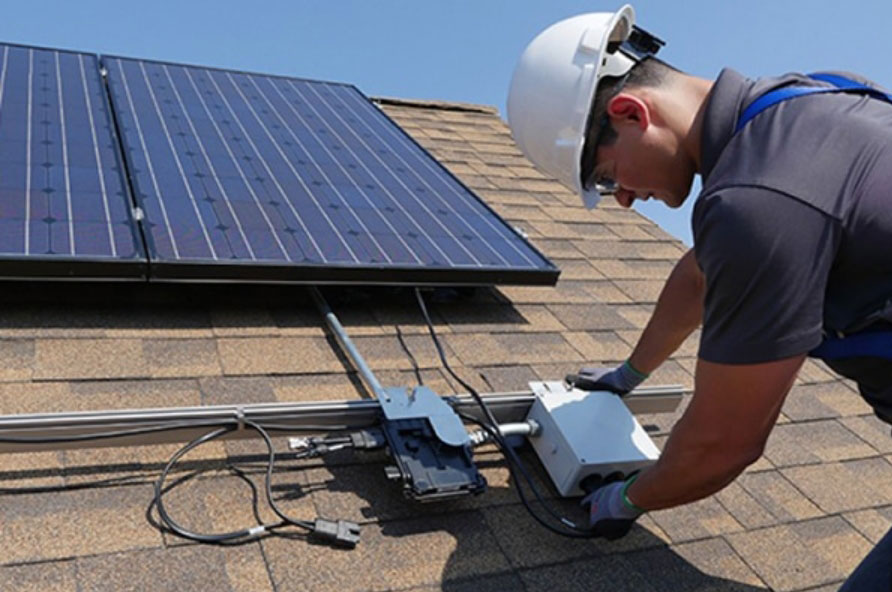
The adoption of solar energy systems in residential properties has been on the rise, driven by the quest for sustainable and cost-effective energy solutions. One of the significant advancements in solar technology is the development of micro inverter. Unlike traditional string inverters, which are connected to a series of solar panels, micro inverter is attached to each panel individually. This article delves into the impact of micro inverter on home solar panel system efficiency and reliability, exploring their benefits, drawbacks, and overall contribution to solar energy optimization.
Understanding Micro Inverter
Micro inverter convert the direct current (DC) generated by each solar panel into alternating current (AC), which can be used by home appliances or fed back into the electrical grid. This decentralized approach offers several advantages over the traditional string inverter systems, where a single inverter manages the output of multiple panels.
Benefits of Micro Inverter
- Increased Efficiency: One of the primary advantages of micro inverter is their ability to maximize the energy output of each panel. In a string inverter system, the performance of the entire string is limited by the weakest panel. Micro inverter, on the other hand, allow each panel to operate at its optimal efficiency, unaffected by the performance of adjacent panels.
- Enhanced Reliability: Micro inverter improve system reliability by isolating panel-level issues. If one panel or micro inverter fails, the rest of the system continues to function normally. This redundancy significantly reduces the risk of total system shutdowns.
- Easier Installation and Maintenance: Micro inverter simplify the installation process and provide easier access for maintenance. They offer real-time monitoring of each panel’s performance, allowing for quick identification and resolution of issues.
- Safety: Micro inverter reduce the risk of high-voltage DC arcs, enhancing the safety of the solar installation. The lower voltage also simplifies compliance with safety regulations.
Drawbacks of Micro Inverter
- Higher Initial Cost: The upfront cost of micro inverter is higher compared to string inverter. However, this is often offset by the increased energy yield and reduced maintenance costs over time.
- Complexity: With more components, micro inverter systems can be more complex to install and manage. This complexity can be mitigated with proper planning and professional installation.
- Potential for Increased Points of Failure: While micro inverter enhance overall system reliability, having more devices increases the potential points of failure. However, the impact of any single failure is minimized due to the distributed nature of the system.
Comparative Analysis
The following table provides a comparative analysis of micro inverter and string inverter based on key performance metrics:
| Metric | Micro Inverter | String Inverter |
|---|---|---|
| System Efficiency | High, as each panel operates independently | Limited by the weakest panel in the string |
| System Reliability | High, with redundancy at the panel level | Lower, as failure can affect multiple panels |
| Installation | Simpler, but potentially more complex due to more components | Easier with fewer components |
| Maintenance | Easier with real-time panel-level monitoring | More challenging, issues are harder to isolate |
| Safety | Higher, with lower voltage and reduced risk of DC arcs | Lower, with higher voltage and greater risk of DC arcs |
| Initial Cost | Higher upfront cost | Lower upfront cost |
Case Studies
Case Study 1: Residential Solar Installation in California
A homeowner in California installed a 5 kW solar panel system using micro inverter. Over a year, the system demonstrated a 15% increase in energy production compared to a similar system with string inverter. The homeowner reported fewer maintenance issues and appreciated the real-time monitoring capabilities that allowed for immediate identification of underperforming panels.
Case Study 2: Suburban Home in Texas
In Texas, a suburban homeowner replaced an aging string inverter system with micro inverter. The new system showed improved reliability, with no significant downtime reported over two years. The enhanced safety features also provided peace of mind, particularly during the installation process.
Conclusion
Micro inverter has revolutionized residential solar energy systems by enhancing efficiency and reliability. Despite their higher initial cost and increased complexity, the benefits of micro inverter, including optimized energy production, improved system reliability, and enhanced safety, make them a compelling choice for homeowners looking to invest in solar energy. As technology advances and prices continue to decrease, micro inverter is likely to become the standard in residential solar installations, driving the adoption of sustainable energy solutions worldwide.
By understanding the impact of micro inverter, homeowners can make informed decisions that optimize their solar energy systems’ performance and reliability, contributing to a greener and more sustainable future.
